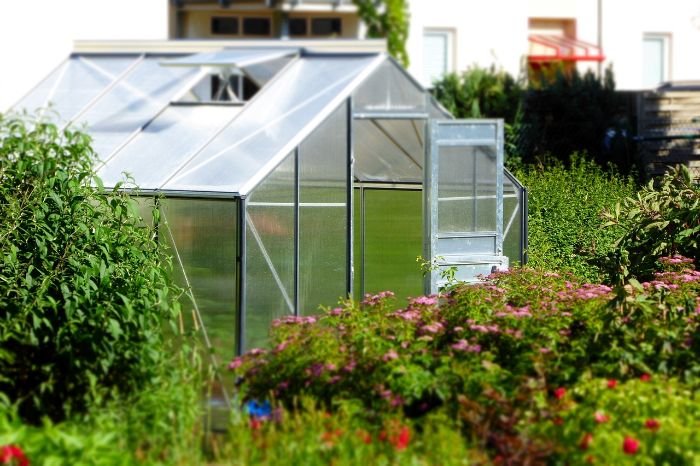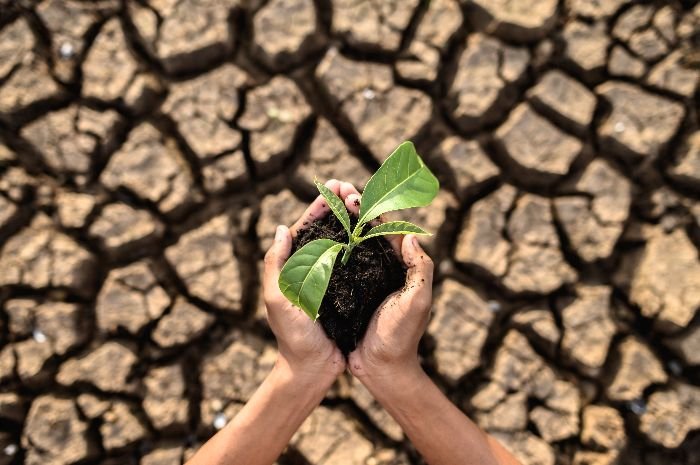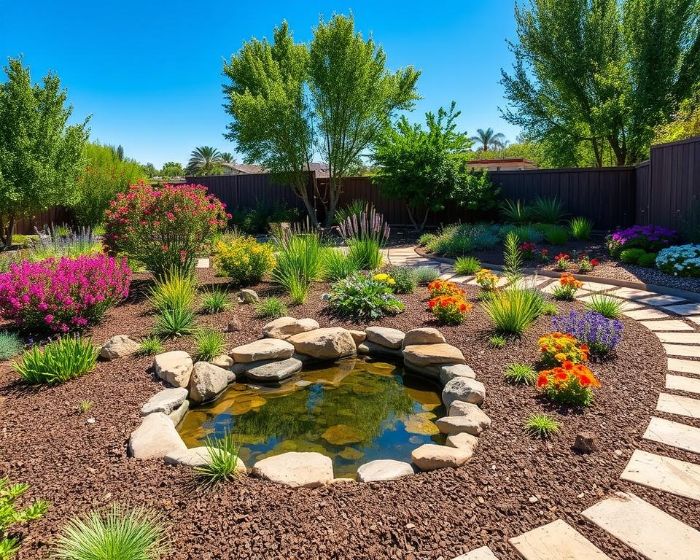Your local climate zone plays a decisive role in your gardening success and energy management. It shapes weather patterns, planting seasons, and the types of plants that can thrive in your environment. By mastering the nuances of your climate zone, you can build a resilient garden and optimize your approach to energy use year-round.
This guide examines why understanding your climate zone matters, how it influences plant selection and care, and the practical tools available to help you determine your zone. You will also discover tailored gardening strategies, solutions for common challenges across different climates, and actionable tips for planning a productive garden throughout the seasons.
Key Takeaways:
- Mastering your local climate zone is critical for sustainable gardening and efficient energy use.
- Climate zones define weather patterns and planting seasons, directly impacting plant selection and care.
- Resources such as the USDA Plant Hardiness Zone Map provide essential guidance for identifying your zone.
- Tailoring your gardening strategies to your climate ensures healthier plants and higher yields.
- With proper planning, challenges like extreme weather and water scarcity can be effectively managed.
Table of Contents
The Importance of Knowing Your Climate Zone
A precise understanding of your climate zone is fundamental for cultivating a thriving garden. Your climate zone defines key weather factors – temperature fluctuations, rainfall patterns, and frost dates, that directly influence plant performance. By aligning your plant selection with your specific climate conditions, you significantly increase the likelihood of robust, sustainable growth.
Beyond influencing plant selection, understanding your climate zone allows you to anticipate seasonal shifts more accurately. Recognizing early signs of weather changes, such as temperature drops or prolonged drought periods, gives you a crucial advantage in preparing your garden and protecting sensitive plants ahead of time.

How Climate Zones Affect Plant Selection and Care
Every climate zone presents distinct temperature ranges and environmental conditions that dictate plant success. For instance, plants favoring cool temperatures and moderate rainfall often underperform in regions characterized by heat and drought. By aligning your plant selection with your local climate, you enhance the resilience and vitality of your garden. Moreover, an accurate understanding of your climate zone allows you to refine care practices, including irrigation frequency and pruning methods, to meet the specific demands of your environment.
electing plants suited to your climate zone not only increases survival rates but also reduces the need for resource-intensive interventions. By working with nature instead of against it, gardeners minimize water usage, lower maintenance costs, and create more sustainable landscapes that require fewer chemical treatments.
Seasonal Gardening Activities by Climate Zone
Seasonal gardening tasks differ significantly across climate zones due to variations in temperature, rainfall, and frost periods. For example, while early spring may offer ideal conditions for planting tomatoes in milder zones, colder regions often require gardeners to delay planting until the final frost has passed. Understanding your climate zone allows you to synchronize your planting, maintenance, and harvesting schedules with the natural cycles of your region, maximizing plant health and productivity.
Adapting to seasonal changes also involves preparing the soil, adjusting fertilization schedules, and monitoring pest activity, all of which vary depending on climate zone dynamics. By proactively adjusting these practices, gardeners can avoid common seasonal pitfalls and promote continuous growth throughout the year.
Identifying Your Local Climate Zone
Accurately identifying your local climate zone is a foundational step toward successful gardening. Knowing your zone enables you to select plants that align with your environment and to organize your gardening schedule more effectively. Several reliable tools and resources are available to help determine your specific climate zone with precision.
Tools and Resources for Determining Your Climate Zone
One of the most trusted resources for determining climate zones in the United States is the USDA Plant Hardiness Zone Map. This detailed map offers critical information about temperature ranges and growing conditions across different regions. By consulting the USDA Plant Hardiness Zone Map, you can accurately identify your zone and select plants that are best suited to thrive in your local environment.
In addition to the USDA map, numerous online climate zone finders, weather platforms, and gardening communities offer tailored insights into local climate conditions. Many of these resources feature interactive tools and detailed databases where you can input your location and obtain precise information about your specific zone.
When using online tools, always cross-reference the information with multiple sources to ensure accuracy. Microvariations in topography, urban heat effects, and localized weather anomalies can influence how standard climate data applies to your specific location. Taking time to validate your climate data results in more reliable gardening decisions.
Understanding the Microclimate in Your Garden
Identifying your general climate zone is essential, but understanding the microclimate within your own garden is equally important. A microclimate refers to the localized conditions, such as temperature, humidity, and wind exposure, that can differ noticeably from the broader regional climate. Elements like sunlight patterns, nearby buildings, fences, or even variations in ground elevation can all create distinct microclimates. For instance, areas adjacent to walls may retain more heat and offer protection from strong winds, creating a sheltered environment that supports different types of plants compared to open areas of the same garden.
To fully understand your garden’s microclimate, it is important to closely observe and assess the specific environmental conditions across different sections of your property. By identifying patterns in sunlight exposure, wind flow, and moisture levels, you can make more informed decisions about plant placement and adjust your gardening practices to suit each microzone’s unique characteristics.

By combining knowledge of your broader climate zone with a clear understanding of your garden’s microclimate, you can tailor your gardening strategies more precisely. This approach significantly improves plant health, resilience, and overall garden productivity.
Gardening Strategies for Your Climate Zone
Selecting Plants That Thrive in Your Area
Effective gardening strategies begin with selecting plants specifically adapted to your climate zone. Success depends heavily on choosing species that match the temperature range, rainfall patterns, and soil conditions of your region. When evaluating plants, prioritize characteristics such as heat or frost tolerance, drought resistance, and soil compatibility. Aligning plant selection with your local environment strengthens overall garden resilience and reduces the need for intensive maintenance.
Adapting Gardening Practices to Local Weather Patterns
Beyond selecting the right plants, adapting your gardening practices to local weather fluctuations is crucial for long-term success. Even plants well-suited to your climate can experience stress during unexpected dry spells, heatwaves, or cold snaps. Adjusting watering routines, implementing water conservation methods, and providing frost protection when needed are vital adaptations. By fine-tuning your practices to match local weather variations, you enhance plant vitality and promote consistent garden health throughout the year.
Consulting local gardeners and horticultural experts offers valuable practical knowledge tailored to your climate zone. These professionals understand the nuances of local weather patterns and common challenges, and can provide targeted advice on plant selection, care techniques, and seasonal adjustments. Leveraging their experience allows you to refine your gardening approach and achieve more consistent, reliable results.
Addressing Climate Zone Challenges in the Garden
Each climate zone brings distinct challenges that can impact garden performance. Extreme conditions, including heatwaves, sudden frosts, and heavy rainfall, can stress plants and disrupt growth cycles. Proactively mitigating the effects of severe weather is essential for maintaining plant health and sustaining garden productivity throughout the year.
Mitigating Extreme Weather Conditions
To safeguard your plants against extreme weather, implement targeted protective strategies:
- Provide Shade – Plant deciduous trees or install shade cloths to reduce heat stress during intense sunlight.
- Use Protective Coverings – Shield sensitive plants with frost blankets or plastic sheeting when freezing temperatures are forecasted.
- Plant Windbreaks – Create natural or structural windbreaks, such as hedges, fences, or trellises, to minimize wind damage and reduce moisture loss.
By applying these measures proactively, you enhance your garden’s resilience against the unpredictable effects of extreme weather.
Water Management and Conservation Tips
Effective water management is critical across all climate zones, particularly as weather patterns become more unpredictable. Key strategies include:
- Use Mulch – Spread organic mulch, such as wood chips or straw, around plants to retain soil moisture, regulate temperature, and suppress weed growth.
- Install Drip Irrigation Systems – Utilize drip irrigation systems to deliver water directly to root zones, minimizing evaporation and optimizing water use efficiency.
- Capture Rainwater – Set up rain barrels or cisterns to collect and store rainwater for irrigation during dry periods, reducing reliance on municipal supplies.
Integrating these techniques into your gardening routine conserves water resources, supports plant health, and strengthens garden sustainability even during challenging weather conditions.

Planning for Success Across the Seasons
Successful gardening demands thoughtful planning and consistent organization across all seasons. Developing seasonal gardening checklists tailored to your climate zone helps you prioritize critical tasks and maintain steady progress. These checklists provide a structured guide for essential activities such as planting, fertilizing, pruning, and implementing pest control strategies at the optimal times.
When creating your gardening checklist, factor in the specific characteristics of your climate zone, including seasonal variations and plant requirements throughout the year. Aligning your activities with shifting weather patterns allows you to optimize plant development and maintain a thriving garden across all seasons.
Transitioning your garden through seasonal changes is a vital component of maintaining year-round vitality. As weather conditions shift, adapt your practices accordingly. Prepare for winter by insulating delicate plants against frost and cold, and start seeds indoors early to gain an advantage for the spring growing season. Consider moving annuals indoors to overwinter, extending their lifespan and maximizing your planting investment. By aligning your activities with seasonal demands, you promote continuous garden health and productivity.
To achieve consistent gardening success, adopt a seasonal approach and develop personalized checklists aligned with your specific climate zone. Strategic planning and timely adjustments to your gardening practices allow you to cultivate a vibrant, resilient garden that flourishes throughout the year.
FAQs
Why is identifying your local climate zone important for gardening?
Identifying your local climate zone is critical because it defines key weather factors such as temperature ranges, rainfall patterns, and frost dates. This knowledge enables you to choose plants adapted to your environment and to schedule gardening activities in alignment with seasonal conditions, significantly improving plant health and garden productivity.
How do climate zones influence plant selection and care practices?
Climate zones determine the temperature ranges, rainfall levels, and seasonal patterns that directly impact plant survival and growth. By selecting plants suited to your zone, you increase resilience and minimize stress. Climate zones also guide care practices, such as optimizing watering schedules, timing pruning activities, and preparing plants for seasonal transitions.
What seasonal gardening activities should you plan based on your climate zone?
Seasonal gardening activities vary by climate zone due to differences in planting windows, frost dates, and rainfall patterns. Creating a checklist based on your zone helps you time critical tasks such as planting, fertilizing, pruning, and managing pests, ensuring your garden remains healthy and productive throughout the year.
What tools can help you identify your local climate zone?
You can determine your local climate zone using resources like the USDA Plant Hardiness Zone Map, which provides detailed regional temperature data. Additional tools such as online climate finders, weather services, and gardening forums offer interactive platforms where you can input your location and receive precise climate zone information.
What is a microclimate, and why does it matter in gardening?
A microclimate refers to the localized environmental conditions within a specific area of your garden, influenced by factors such as sunlight exposure, wind flow, and proximity to structures. Recognizing microclimates allows you to optimize plant placement and tailor care practices, improving plant performance and overall garden success.
Which gardening strategies work best for different climate zones?
Effective gardening strategies begin with selecting plants that match your zone’s temperature range, rainfall patterns, and soil characteristics. Focus on traits like drought tolerance, frost resistance, and soil adaptability. Adapt your practices to local weather variations by adjusting irrigation schedules, implementing frost protection, and leveraging seasonal planting windows for optimal results.










